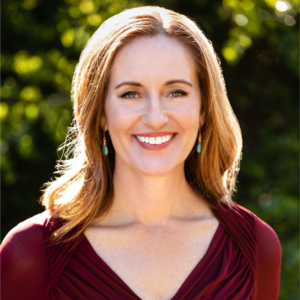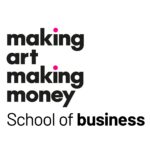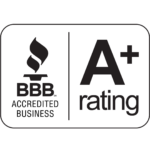5 Reasons Fine Artists Are Failing Miserably At Online Marketing
5 Reasons Fine Artists Are Failing Miserably At Online Marketing
(Transcription)
Ann Rea (00:00):
Hey everyone. Ann Rea from San Francisco, California. I’m an artist. I’m a mentor, the creator of the Making Art Making Money program. And I want to talk about something that is pissing me off. It’s online ads that are disappointing so many artists, and I want to explain why. Why it is not a good idea, and when it is a good idea to employ online advertising. So, what I’d love to do is invite you to comment in the chat and let me know, have you actually used online advertising, and was it successful? So how much money did you pay an online advertising and how much money did you make? And I want to give you some framework that is very clear and concise so that you understand when it’s a good time and when it is not a good time to use online ads.
Ann Rea (00:58):
So I’m going to be looking over here because I made some notes and I don’t want to miss some things, but first and foremost, you have to understand this. If you’re going to do any kind of advertising, whether it’s digital advertising, or print billboards, anything, you have to understand your product. And number one, most artists, most people do not understand their product. So, as a fine artist you’re not in the business of selling goods or services. And all the online platforms, whether it’s Facebook ads, Instagram, whatever, they are designed to sell goods or services. Plain and simple. All the keyword strategies are designed to sell goods or services. But the fine artists, their product is not goods or services. It’s actually emotion. So premise number one, you really have to understand your emotion. Number two is this, if you’re selling fine art, you’re in luxury marketing. Like it or not, you can have all the philosophical debates about it all you want.
Ann Rea (02:07):
It doesn’t matter, because art is indeed– fine art is indeed a luxury. It’s not like basic transportation, housing and food. You can live without it, right? So therefore it is by an economic definition a luxury. So why is that so relevant to this conversation? It’s really relevant because when it comes to luxury marketing, real relationships with your collectors is what equals revenue, not clicks. It’s real relationships. And those relationships are very important because those relationships, your collectors’ relationship with you yield something called “Conversational Currency,” which is very valuable amongst the affluent, right? Now, what does that mean? It means they want to be able to say, or brag, or share the inspiration behind the art, because they know the artist. They want to be able to say they know the artist, because people who care about art really care about the artists. They don’t care about the middleman, and they want, and they value that conversational currency. And they can’t get that from a click.
Ann Rea (03:15):
They can only get that from a real relationship with you. So that’s premise number two. Real relationships equal revenue. And to review, premise number one is your product as an artist is actually emotion, not goods or services which all the digital marketing platforms or advertising platforms are designed to sell. That’s all it is. Okay. Number three. Premise number three, keep it simple and sell art. And how do you do that? Well, first of all by referral. Again, you’re in the luxury marketing space and the affluent rely more on referrals, meaning an introduction from one person to you, then they do mainstream customers, right? And so that’s really simple because number one, when you get a referral that person who was referred to you is four times more likely to buy from you and spend more money. Let me say that again, a referral is four times more likely to buy from you and spend more money. Four times more likely.
Ann Rea (04:23):
So it’s easier to sell your art to these people. And so as a result, referrals generate 80% more sales on average. That’s just on average where you keep 100% of the money. No sales commission to art representatives, no commissions to art galleries, no expenses of going to these art shows, paying these exorbitant booth fees. That’s all gone. So you can keep it super simple and have an organic and authentic relationship with your collectors. Okay? So that’s premise number three. Keep it simple. And what does online advertising do? It’s very complicated and often overwhelming. It takes a lot of skill to master and or you have to pay someone. And if they don’t understand what your product is, which is they typically do not, you’re going to pay someone to do your ad digital advertising, online advertising, and they’re not going to get it right.
Ann Rea (05:25):
You’re going to lose a lot of money. All right. Premise number four, you want to be zigging where everyone else is zagging. Now, what do I mean by that? If you’re already in a super saturated overcrowded market space, whether that’s selling fine art, it could be selling wine, then you do not want to do what everyone else is doing. You want to go and do the opposite. You want to differentiate yourself. So if you’re in this pool of digital advertisers and you’re competing for all the same damn keywords, guess what you’re doing? You are in that overcrowded market space and you are very likely to lose money. All right. So premise number four, zig where everyone else is zagging. Number five, you can’t just pray and pray. Okay? So that’s what most artists do when the start doing online ads. Now, let me make something clear.
Ann Rea (06:23):
This is not a diatribe against digital advertising online ads, because that’s how I’ve served 23 different types of artists from 20 countries and counting. So please don’t get this twisted. It’s not that online advertising is bad. It’s just that there are– there’s a sequence to things. There’s a sequence to everything we create, whether it’s baking a cake or painting a painting, right? You can’t, you can’t frost the cake and put the cherry on top. If you haven’t, you know, mix the batter and preheated the oven, right? You shouldn’t be choosing a frame for your etching until, or your painting until you’ve actually stretched the canvas, right? And just sewed it. So same thing here. You want to be ready for online advertising. You don’t want to put the cart before the horse, or the cart will run over your horse. So what I mean by this, you can’t just pray and pray and hope it works.
Ann Rea (07:23):
You’re going to waste so much money. If you do not know your niche, you have no business doing any kind of advertising period. End of sentence. And a lot of artists don’t even know what the word niche means. Most often artists believes that their niche is their medium. Like they’re a sculptor or they’re a painter or their style or their genre. So let me make it perfectly clear what knowing your niche actually means. Knowing your niche means number one, you know who wants to buy your art. Number two, you know exactly why they want to buy it. And number three, you know where to go find more people just like them. And if any business, whether it was a fine artist or anyone trying to sell anything, and they can’t check those three boxes, well they’re going to go out of business. So please don’t waste your time and money on digital advertising, online advertising, unless you know your niche. And then start out with a very small budget
Ann Rea (08:20):
if you even know. And the reason I want to talk about this is because I have so many students who come to the Making Art Making Money program, and they have blown through a huge amount of money either spending on advertising, and trying to do it themselves, or they paid a marketing firm a ton of money and it didn’t work out. And it’s just sad to see because it’s a mistake that they could have avoided if they had listened to this. So, if you want to learn your niche and you want to stop spinning your wheels, you want to stop, let’s stop trying to find decent representation, you want to stop schlepping all your stuff to art shows, and you want to stop trying to get your, you know, trying this digital marketing and online marketing it’s not working,
Ann Rea (09:13):
and you really want to learn how to find your niche, then I want to invite you to apply to the Art and Money Master Class and I’m going to explain how I teach artists from 20 countries and counting how to do just that. I’ll also give you all the details about the Making Art Making Money program. But I want to make one thing perfectly clear. I’m not selling this, okay? This program is available by application only. The fact is I turn away more artists than I ever accept, because I can really, I know who I can help, and I know who I can’t help. Now, if you apply and I reject your application, I want you to know, I am going to try to point you in the right direction and give you a resource that’s appropriate. So there’s no harm in applying. So I want to invite you to do that. All right, real quick. Kimberly Ann says “Loved that. Metal future. The advertisers don’t understand what art is nor would it stands for.” That’s right.
Ann Rea (10:14):
Exactly. “And they think it’s like another product, which is completely different.” Absolutely. You are spot on. The fact is this is what I teach in the Making Art Making Money program is something that you are– they don’t teach you in art school and you can’t learn in business school. I cannot tell you how many MBAs have come through the Making Art Making Money program. We’ve had a Harvard MBA come through the Making Art Making Money program. Smart lady. Her expertise was marketing, but she couldn’t for the life of her really sell her own art. She didn’t sell very much. And it’s because she didn’t understand her product. She didn’t understand that her product was actually emotion. Once she did understand that she did quite well. We also have a comment “Once the visual artist knows their mission,” that’s right, “the target market will show up on target marketing.
Ann Rea (11:04):
Guerrilla marketing is going to be better at first.” Yes. Guerrilla Marketing. So that’s the name of a book, “Guerrilla Marketing.” I would actually be clearer, it’s referral marketing that works. Referral marketing works because when someone is referred to you, first of all, your market is the affluent, and they rely more on referrals than mainstream consumers. That’s number one. Number two, as I said at the beginning, when someone is referred to you, they are four times more likely to buy from you and spend more money. So guerrilla marketing is everything, and it’s kind of hacking at it, and it’s not appropriate for luxury marketing. Luxury marketing is distinctly from the general headline of guerilla marketing. So I want to caution you about that because so many artists spend so much time, so much energy, so much money on stuff that doesn’t work. And you don’t have an unlimited amount of time and energy.
Ann Rea (12:09):
And when that stuff doesn’t work, when these attempts don’t work, it kills your confidence. And let’s face it. It’s confidence that sells fine art. It’s confidence that sells. And it’s also confidence that keeps you inspired as an artist to keep creating. So you have to protect your confidence and stop doing anything and everything, and focus on the things that are going to work. So I want to invite you to apply to the Art and Money Master Class. The link is somewhere below. My assistant, Joie, will stick it in the chat if it’s not somewhere. And thank you for listening. I hope that this was helpful. And really my biggest hope is that if you’ve listened to this, please share this with one or two other artists who you know, because my hope here, my hope here is that I can save you guys some money, and some time, and some effort, and some disappointment. That’s really my intention here. So, thank you for listening and tune in next week.

Ann Rea, Fine Artist & Mentor
Ann Rea is a San Francisco-based fine artist. She created Making Art Making Money®, the leading and most reputable business program for fine artists since 2005. Rea’s art and business savvy have been featured on ABC, HGTV, Creative Live, The Good Life Project, in the book Career Renegade by Jonathan Fields, the San Francisco Chronicle, Art Business News, Fortune, and Inc. Magazines. Rea’s artistic talent was commended by her mentor, art icon Wayne Thiebaud.

